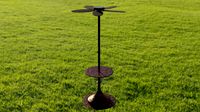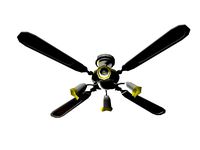GrabCAD

Baxter Ventilator
by GrabCAD
Last crawled date: 1 year, 11 months ago
The Baxter Ventilator was designed specifically to address a shortage of ventilators during a pandemic. During pandemic conditions, mass production and supply chains for ventilators may be disrupted, and surges in demand for medical device components and market failures may limit availability. The Baxter Ventilator was therefore designed to be built using commonly available parts and by individuals with limited skills in remote locations. Following IKEA-style assembly instructions and videos, an individual will be able to assemble the ventilator in four to eight hours, using only a few basic hand tools. These simple but robust ventilators can be individually built for around $2,500 at retail prices including the cost of a 3D printer, with possible production models costing between $500 and $1,000.
The Baxter Ventilator is well suited for use in both modern hospitals and emergency field settings. Because it creates its own pressure, the Baxter Ventilator does not require pressurized air or oxygen. The only requirement for operation is a power outlet, and if desired oxygen tanks are easily mounted. If power is disrupted the Baxter Ventilator can run on backup power for over 90 minutes. All control and operational power is supplied at low, non-hazardous voltages.
The Baxter Ventilator can provide both controlled and assisted ventilation. In controlled mode the operator can specify volume controlled continuous mandatory ventilation (VC-CMV) or pressure controlled continuous mandatory ventilation (PC-CMV). In assisted mode, the operator can set up pressure-support ventilation (PSV) or volume-support ventilation (VSV) and can choose synchronized intermittent-mandatory ventilation (SIMV).
The design of this ventilator is based on a large pneumatic cylinder driven by a motor via a belt and pulley system. The ventilator’s control software synthesizes sensor measurements and inputs from the user into a schedule that determines piston location and speed, providing the patient with the desired rate and volume of air. The control software is built on Python subroutines that communicate with a graphical user interface (touch screen) through an inter-process communication framework provided by the ZeroMQ library. Positive end expiratory pressure (PEEP), peak inspiratory pressure (PIP), and fraction of inspired oxygen (FiO2), are controlled manually, but monitored by the software. The Baxter Ventilator features numerous mechanical and software redundancies and alarms to ensure safe operation.
The current prototype was evaluated on both a Gaumard HAL S3201 patient simulator, and on a QuickLung and monitored by ADInstruments’ PowerLab DAQ. The prototype met the target criteria and produced results similar to industry-standard ventilators, across a range of settings and various ventilation modes. More importantly, the Baxter Ventilator proved to be very repeatable, creating almost identical breaths during ventilation at all settings. Additionally, the Baxter Ventilator was easily tuned to produce different ventilation output by adjusting the motor profiles. Repeatability and tunability allow the Baxter Ventilator to be configured to meet the needs of clinicians.
The Baxter Ventilator is well suited for use in both modern hospitals and emergency field settings. Because it creates its own pressure, the Baxter Ventilator does not require pressurized air or oxygen. The only requirement for operation is a power outlet, and if desired oxygen tanks are easily mounted. If power is disrupted the Baxter Ventilator can run on backup power for over 90 minutes. All control and operational power is supplied at low, non-hazardous voltages.
The Baxter Ventilator can provide both controlled and assisted ventilation. In controlled mode the operator can specify volume controlled continuous mandatory ventilation (VC-CMV) or pressure controlled continuous mandatory ventilation (PC-CMV). In assisted mode, the operator can set up pressure-support ventilation (PSV) or volume-support ventilation (VSV) and can choose synchronized intermittent-mandatory ventilation (SIMV).
The design of this ventilator is based on a large pneumatic cylinder driven by a motor via a belt and pulley system. The ventilator’s control software synthesizes sensor measurements and inputs from the user into a schedule that determines piston location and speed, providing the patient with the desired rate and volume of air. The control software is built on Python subroutines that communicate with a graphical user interface (touch screen) through an inter-process communication framework provided by the ZeroMQ library. Positive end expiratory pressure (PEEP), peak inspiratory pressure (PIP), and fraction of inspired oxygen (FiO2), are controlled manually, but monitored by the software. The Baxter Ventilator features numerous mechanical and software redundancies and alarms to ensure safe operation.
The current prototype was evaluated on both a Gaumard HAL S3201 patient simulator, and on a QuickLung and monitored by ADInstruments’ PowerLab DAQ. The prototype met the target criteria and produced results similar to industry-standard ventilators, across a range of settings and various ventilation modes. More importantly, the Baxter Ventilator proved to be very repeatable, creating almost identical breaths during ventilation at all settings. Additionally, the Baxter Ventilator was easily tuned to produce different ventilation output by adjusting the motor profiles. Repeatability and tunability allow the Baxter Ventilator to be configured to meet the needs of clinicians.
Similar models
grabcad
free

Ventilator
...ry to expiratory time (i/e).
please feel free to contact us for any questions or suggestions you have. thank you and stay safe.
grabcad
free

Ventilator
...te the technical feasibility of manufacturing well perform ventilator in sri lanka to fight against the covid-19 global pandemic.
grabcad
free

BiPAP Ventilator with Mask Hookup
...proper respiration of patients. then the air is released into the surrounding environment. the patient has just taken one breath.
grabcad
free

We Care Ventilator
...the desired level, then start the ventilator.
the pressure sensor will control the ventilator to turn on and shut off the machine
grabcad
free

We Care Ventilator
...hes desired volume,operator will start the ventilator. solenoid valves are monitored and controlled by the circle.
operator will
grabcad
free

TNCD
...h as the fraction of inspired oxygen, positive end-expiratory pressure, tidal volume, and inspiratory and expiratory time ratios.
grabcad
free

DOLC-01
...it will monitor incoming oxygen pressure and power levels along with battery backup life with alarms to notify of loss of either.
grabcad
free

Positive Pressure Ventilator
...ospital infrastructure. finally, the timer and switch value can be set to control both the breathes per minute and the i:e ratio.
3dwarehouse
free

DIY Pandemic Ventilator by Oxygen
...diy pandemic ventilator by oxygen
3dwarehouse
diy pandemic ventilator by oxygen
grabcad
free

ProjectWorx - COVID19 - Breath Right
...hich provide feedback for motor control and alarms. these sensors can be moved along the manometer to adjust operating setpoints.
Baxter
3ddd
$1

baxter
...baxter
3ddd
baxter
baxter
3ddd
$1

Baxter
...baxter
3ddd
baxter
по каталогу
3ddd
$1

Baxter
...baxter
3ddd
baxter , капитоне
исчё бакстер)
3ddd
$1

Baxter
...baxter
3ddd
baxter
материалы vray. max 2013. fbx
3ddd
$1

Стол Baxter
...стол baxter
3ddd
baxter
baxter.
3ddd
$1

Baxter colette
...baxter colette
3ddd
baxter
baxter-colette
3ddd
$1

Baxter Bauhaus
...baxter bauhaus
3ddd
baxter , bauhaus
baxter bauhaus
3ddd
$1

Baxter Bauhaus
...baxter bauhaus
3ddd
baxter , bauhaus
baxter bauhaus
3ddd
$1

Baxter Guggie
...baxter guggie
3ddd
baxter , guggie
baxter guggie
3ddd
$1

Baxter / Paloma
...baxter / paloma
3ddd
baxter
baxter chair paloma
Ventilator
3d_export
$5

ventilation
...ventilation
3dexport
5 types of ventilation
3d_export
$10

ventilation
...ventilation
3dexport
5 types of ventilation and engineer communication
3d_ocean
$5

Ventilator
...pliance blower desk detailed electric electro fan hvac oscillating realistic table ventilator
high poly, very detailed ventilator
3d_export
$25

ventilator
...ventilator
3dexport
turbosquid
$20

Ventilator
... free 3d model ventilator for download as blend, fbx, and obj on turbosquid: 3d models for games, architecture, videos. (1612370)
turbosquid
$43

Ventilator
... available on turbo squid, the world's leading provider of digital 3d models for visualization, films, television, and games.
turbosquid
$25

ventilation
... available on turbo squid, the world's leading provider of digital 3d models for visualization, films, television, and games.
turbosquid
$4

Ventilator
... available on turbo squid, the world's leading provider of digital 3d models for visualization, films, television, and games.
3d_export
$5

ventilation and columns
...ventilation and columns
3dexport
ventilation and columns.<br>3 types of ventilation<br>2 types of columns
archive3d
free

Ventilators 3D Model
...ventilators 3d model
archive3d
ventilation ventilation equipment hvac
